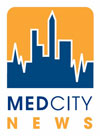
PricewaterhouseCoopers, Moneytree, and the BioEnterprise delivered bad news for the medical device community this week: Investment has slipped, the United States’ dominance is eroding, and nimbleness in emerging markets poses a long-term threat to United States as the leader in developing new innovative medical devices.
Marching orders are clear and unsurprising. We need more innovation, talent, financial incentives, investment, and sleeker and faster regulation. The question is, even if can do all or most of these things well, will it be enough to compete with the speed of growth in countries like China, India and Brazil?
Quantifying the Problem
The PwC report was an effort to quantify concerns by medtech leaders into convincing data. By 2020, the authors predicted that China, India and Brazil will gain significantly in five key measurements — how much insurers will pay for innovation, the approval process for new devices, patient demand, strength of resources from academic research, and amount of venture capital support — while the U.S. will lose ground.

Why? Simply put, emerging markets are able to grow faster and more cheaply because they are where the U.S. was decades ago. The U.S., meanwhile, has built up a costly regulatory infrastructure interested in perpetuating itself that will deliver less value and less profit.
Already, American companies trying to make new innovative medical devices seek approval and commercialization first in European countries, a process that takes three months versus six here, the report states.
“Europe will approve your system for design and qualifying devices,” said Dale Wahlstrom, longtime Medtronic leader and current CEO of LifeScience Alley, a Minnesota-based trade association. “If you’re ISO 9000 certified, they are assured that the product coming out the other end is safe. They do not focus on proving efficacy, as they believe that’s the responsibility of the physician.”
The report also found that the model for innovation is changing. Device makers used to count on increasing profits from “incremental” innovation. But insurers increasingly want innovation on the scale of that for consumer electronics, where products develop better function and more features for less money.
Follow the Money
We can argue that with the right policy moves, the U.S. can reduce health care and regulatory costs, and hopefully continue to attract the top academic talent.
But China is already second behind the U.S. in academic leaders in the sciences, and will become the third largest healthcare market by 2020. Its device market is predicted to grow 15 percent a year for the next five years, while the U.S. market will grow more slowly.
Where growth goes, so goes the money. As that trend continues to gain momentum, how much pain will it inflict on the industry here?
PwC expects China to have the second-largest research and development budget by 2020. Already, global U.S. medical device companies make up to half of their revenue in foreign markets. Following the growth trends, venture capital firms are setting up overseas in droves.
Government incentives will also attract investors to a number of different countries. And in China, more multinational companies will set up research and development operations in order to meet the “local company” criteria that China is mandating to reach its increasingly wealthy middle class.
In an interview with Minnesota Public Radio, Medtronic CEO Bill Hawkins said earlier this week that Medtronic “is looking at whether we should be doing more in China to position ourselves as more of a local company. And that would mean perhaps some manufacturing and perhaps even some R&D.”
In a Harvard Business Review article published last year, economist Edmund Phelps and co-author Leo Tilman, argued that dynamism in the U.S. has been in decline for a decade:
The current financial system is choking off funds for innovation. It lacks transparency, and incentives for risk takers at financial firms are fundamentally misaligned with the interests of stakeholders. Outdated accounting conventions and inadequate disclosures make it impossible to evaluate the business models and risks of financial firms. Excessive resources are allocated to proprietary trading, to lending to overleveraged consumers, to regulatory arbitrage, and to low-value-added financial engineering. Financing the development of innovation takes a backseat.
As Wahlstrom pointed out, the U.S. medical device regulatory system is still the de facto standard for most of the world. “The first question is always, ‘Do you have FDA approval or European approval?’ Currently, the U.S. system, despite its burdens, is far ahead of that in developing nations. Yes, those nations are predicted to catch up. But one thing is clear — without money to back innovation, that won’t matter.

